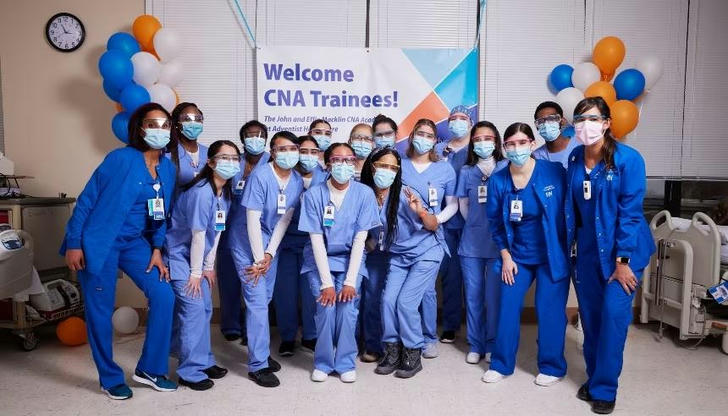Fast CNA options in the U.S.: 2–4 week classes, paid training paths and how to apply
If the goal is to become a Certified Nursing Assistant (CNA) fast and start earning in health care, there are several realistic routes in the U.S. — from true accelerated classes (2–4 week formats) to paid training, WIOA-supported cohorts, registered apprenticeships and employer “earn-while-you-learn” programs. Below is a practical, plain-spoken guide to the options available in late 2025.

Main routes that actually get people into CNA roles — and what they require
1) Very short accelerated courses (2–4 week “fast track”)
🔹What they are: Intensive lecture blocks delivered online or in-person followed by scheduled lab days and a short clinical practicum. Some schools compress classroom time into 1–2 weeks of theory and then spread clinical hours over evenings/weekends.
🔹Typical hours: Combined clock hours vary, but most credible short programs still expect dozens of classroom hours plus required clinical practice (e.g., programs advertising 2-week classroom + several weekend labs/clinical weeks). Purely online study without supervised clinicals will not meet state testing eligibility.
🔹Certification: Graduates go on to the state competency exam (written + skills). Make sure the course is state-approved for your state registry. Nurse.org and state boards summarize state-specific requirements.
2) WIOA / American Job Center–supported CNA classes (government-backed training)
🔹What it is: Many local workforce boards use WIOA funds to pay for short healthcare tracks (including CNA) for eligible job seekers. If approved you may get an Individual Training Account (ITA) that pays the tuition, exam fees and sometimes supports like transportation. WIOA is a main channel for government-funded short CNA cohorts.
🔹Typical hours & credential: These are usually employer-aligned certificate tracks that include required clinical hours and prepare you for the state exam. Lengths often run 4–12 weeks depending on intensity and scheduling.
3) Registered apprenticeship / employer “paid training” routes
🔹What it is: Some community colleges and long-term care networks run registered apprenticeships or employer-sponsored trainee programs that pay wages while you complete classroom and clinical training. Some employers offer an hourly wage of $20.00 to $27.50 during the training period. Apprentices earn a paycheck from day one and typically receive progressive raises as they hit training milestones.
🔹Typical hours & credential: Apprenticeships combine OJT hours and related instruction; upon completion you’ll be ready for the CNA registry and may earn additional credentials such as CPR/BLS. Rowan College examples show apprenticeships that award Department of Labor credentials as well.
4) Job Corps / youth programs (age-limited, historically useful but status may vary)
🔹What it is: Job Corps has historically run CNA training for young people (16–24), often including certification and placement supports. Note: in 2025 Job Corps faced federal funding and operational changes in many locations, so availability is variable — check current Job Corps site updates for local center status. If available locally, Job Corps combines residential support with training and credentials.
Examples of real programs you can find right now
🔸Accelerated community providers: Multiple regional schools list 2–4 week CNA accelerated tracks that combine online theory with weekend clinical labs (search local community colleges and private nursing schools). Always confirm state approval.
🔸WIOA-partnered schools: Several training vendors publicly note WIOA partnerships for CNA classes — if you qualify for WIOA, an American Job Center case manager can tell you which local CNA providers accept ITAs.
🔸Employer-paid models (example): Some long-term care operators will hire “CNA in training” and pay wages while you complete required classroom and clinical hours — ASCCare, for example, advertises paid training models that include classroom and clinical experience while paying trainees. Check local nursing home chains and staffing agencies for similar offers.
🔸Registered apprenticeships: Community colleges and health systems (e.g., Rowan College/Burlington County examples) run grant-funded registered apprenticeships allowing trainees to earn while they learn and receive nationally recognized credentials.
How to choose a program — a short checklist
1.State approval: Confirm the program is approved by the state nursing or health board — this is non-negotiable for taking the state certification exam. (State rules vary, so check your state’s CNA page.)
2.Clinical hours & logging: Ask how many supervised venipunctures/skills (or general competency skills) and clinical hours are included and whether the school helps place you at a clinical site.
3.WIOA & workforce funding: If money or time is tight, contact your local American Job Center to ask about WIOA eligibility and which local CNA providers accept ITAs. Don’t enroll expecting WIOA aid before you’re approved — the center issues vouchers and guidance.
4.Paid-training options: Ask local nursing homes and staffing agencies if they hire “CNA in training” and pay trainees during classroom/clinical hours. If an employer funds training, read the employment terms — some require a short work commitment after certification.
How to apply — step-by-step (do this this week)
1.Check state requirements — search “[your state] CNA training requirements” or the state health/nursing board page to confirm minimum hours and approval rules.
2.Call your local American Job Center (CareerOneStop) and ask which CNA classes are WIOA-approved in your area; request an eligibility appointment.
3.Search for local “paid CNA training” postings on job boards (Indeed, ZipRecruiter) and on long-term care chains’ career pages — apply to “CNA in training” or “Nurse Aide Trainee” roles.
4.Confirm clinical placement & state approval before you pay or start. If an accelerated 2-week program sounds too fast, ask exactly how and when clinical skills are completed — you must log practical competency to be eligible for the state test.
Final, practical advice
🔸Be realistic: truly legitimate CNA certification requires supervised clinical practice. Fast tracks exist, but they bundle clinical hours around the short classroom window.
🔸Lean on workforce centers: American Job Centers/WIOA are the quickest official route to get training support if eligible.
🔸Consider apprenticeships or employer-sponsored routes if earning while training is essential — these programs pay wages and often lead directly to a job on certification.
CNA Certification Requirements By State
